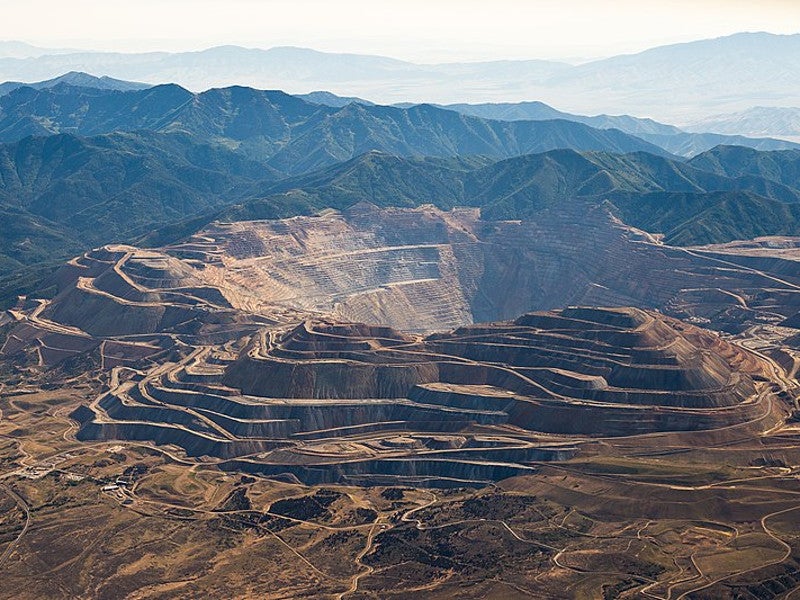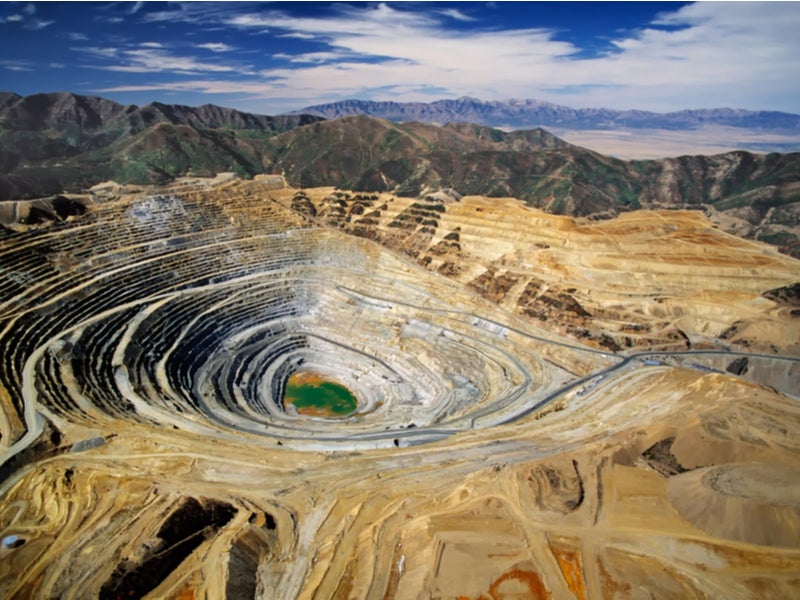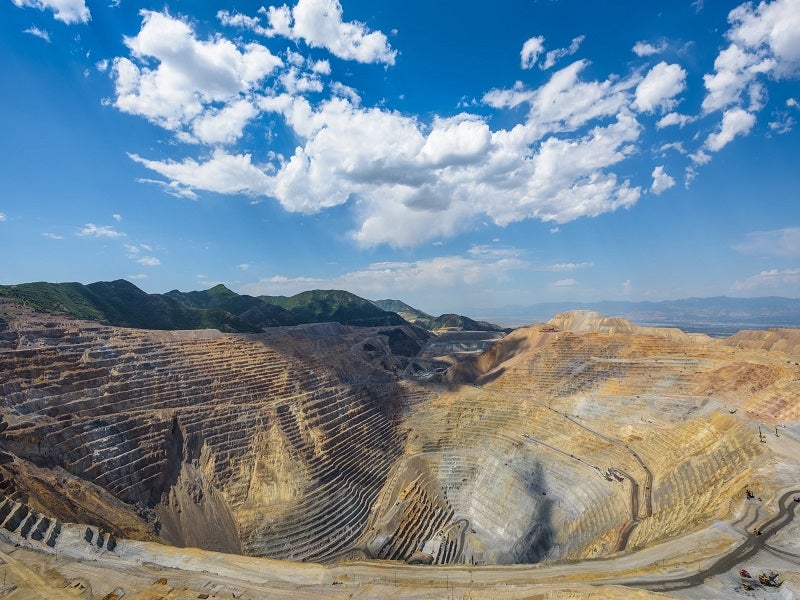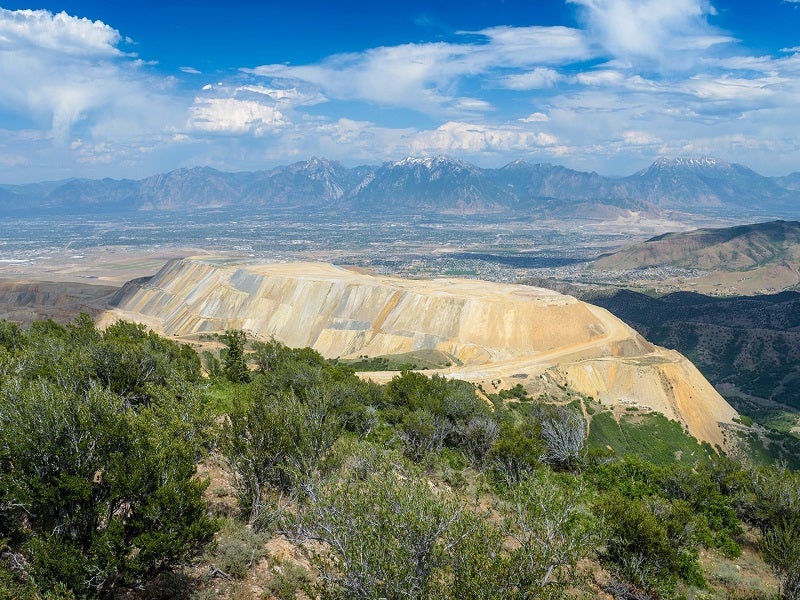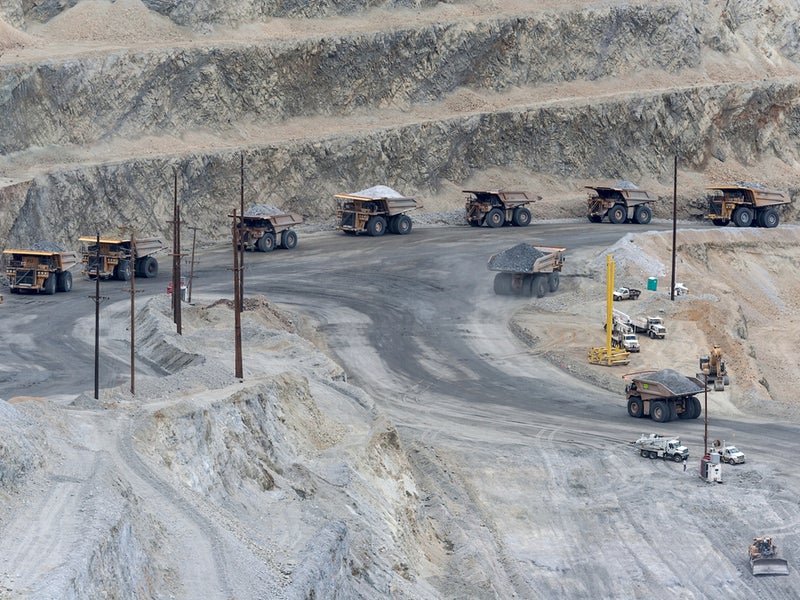The Kennecott copper mine, also known as Bingham Canyon mine, is located in Utah, US.
It is one of the world’s biggest man-made excavations and among the deepest open-pit copper mines.
Rio Tinto is the sole owner of the Kennecott copper project and operates it through its subsidiary Kennecott Utah Copper. The Kennecott mine, Copperton concentrator and Garfield smelter comprise one of the largest and most up-to-date integrated copper operations in the world.
Production from the mine stood at 159,400t of copper, 139,500oz of gold, 7,600t of molybdenum, and 2.22 million ounces (Moz) of silver in 2021.
The feasibility study for the underground development of the Kennecott mine is currently ongoing and is expected to be completed in 2024.
Rio Tinto is also conducting pre-feasibility studies to extend the open-pit mining beyond 2032 by pushing back the North Wall to reach additional resources.
The Kennecott copper mine currently has a workforce of more than 2,000 workers.
Investment details of the Kennecott mine
In early 2005, Rio Tinto committed $170m to the East 1 pushback project to extend the life of the open pit at Bingham Canyon until 2017.
Following research from analysts and investors, the company revealed in 2008 that it was studying deepening the 1.2km pit to shore up an extra 2.83 million tonnes (Mt) of copper resources.
In 2010, Rio Tinto submitted permits to proceed with its Cornerstone project, which is expected to extend the life of the mine to 2028. The Cornerstone expansion project requires 100MW of electricity.
Rio Tinto received permission from the regulators to push the south wall back by approximately 1,000ft and deepen the mine by another 300ft to exceed 700Mt of copper ore. Phase one of the South Wall Pushback project extended the production from 2019 to 2026 with the $0.9bn investment.
The company approved a $1.5bn investment to be made over the next six years in the project, in December 2019. The investment will allow it to continue copper production at the site, extending the operations to 2032.
The company is planning to expand strip waste rock mining and related infrastructure development in phase two of the South Wall Pushback project, leading to the delivery of approximately 1Mt of refined copper between 2026 and 2032.
A $25m investment was approved by the company in early 2020 to finish a pre-feasibility study for the proposed underground mining operations at Kennecott. If the feasibility of underground mining is proved, it is expected to be conducted alongside open-pit operations.
Rio Tinto sanctioned an investment of $108m in underground development in July 2021 to provide early access to the North Rim Skarn orebody at the mine site. A part of the investment is also being used to conduct orebody characterisation studies.
Location, geology and reserves of the Kennecott copper project
Spanning 95,000 acres, the Kennecott copper project is located near Salt Lake City, Utah.
The large classic copper porphyry orebody enjoys a fairly uniform distribution of sulphide mineralisation, mainly chalcopyrite.
The existing pit was worked out by 2013, but open-pit and then underground mining continued after that.
The proven and probable reserves are estimated at 541Mt, with contained metal content of 2.11Mt of copper, 2.09Moz of gold, 28.52Moz of silver, and 0.089Mt of molybdenum, grading 0.44% copper, 0.17g/t gold, 2.22g/t silver, and 0.029% molybdenum, as of December 2021.
The mine is also expected to contain underground mineral resources of 20Mt grading 3.65% copper and 1.62g/t gold.
Mining at Kennecott copper mine
The Bingham Canyon pit is 2.5 miles-wide and very deep. Mining uses a rotary drilling/blasting – shovel/truck – in-pit crushing system, with two to four blasts a day. To contain costs, management uses the most cost-effective drilling, loading and haulage equipment and management tools available.
One of the first of the series of major investments was an in-pit, semi-mobile gyratory crushing unit linked to the Copperton Concentrator by an 8km conveyor system. This reduced haulage distances from the working faces substantially but even so, the mine uses a large fleet of Caterpillar mechanical drive and Komatsu electric-drive trucks, mostly of 218t-capacity, to service ten P&H electric rope shovels.
Dispatching is by the Modular Mining computerised system and Bingham also utilises Thunderbird Pacific’s drill monitoring and logging systems. Both GPS and Glonass are used for precise drill positioning. German company MAN Takraf upgraded and relocated the semi-mobile in-pit crushing plant and conveyor system to keep trucking distances down.
Processing details
The Copperton concentrator was expanded in 1992 and fitted with some of the world’s largest SAG and ball mills, and large flotation cells. There are four grinding and flotation lines, sequentially yielding a copper and molybdenum concentrate. The copper concentrate is piped 27km to the smelter. Until its closure in mid-2001, the older North plant supplied 20% of the copper concentrate for smelting.
The current smelting facilities are the result of major investment, comprising a new primary flash smelter and flash converter system, designed by Outokumpu with input from Kennecott, plus a slag treatment plant. The converter treats matte that is granulated and powdered. The 98.6% copper from the new converter is refined to 99.5% copper in two anode furnaces.
Cast anodes are railed 3km to the refinery’s electrolytic tank house, where marketable high-purity copper is produced, and the gold and silver content of the concentrate is also recovered.
The smelting process at Kennecott produces copper, gold, silver, platinum, palladium, lead carbonate, and selenium.
Molybdenum production details
Molybdenum was regarded as a minor contributor to income at the Kennecott Copper Mine, but increased world demand for molybdenum made it very important. Income from moly sales was just $30m in 2002 but rose to $700m in 2005.
The 2008 mine plan was modified to include areas of higher moly content, even at the expense of copper, while the concentrator was fine-tuned to optimise moly recoveries, with a second expansion of the moly-recovery circuit commissioned in mid-2006.
A major molybdenum deposit was discovered in 2008. Additional porphyry mineralisation was identified beneath the southern wall of the pit. The resources were studied for extraction by open-pit mining methods.
However, because of the economic downturn, the option to expand the underground operations was suspended. In 2008, the company announced an investment of $672m, which included $73m for machinery and equipment and $270m for Molybdenum Autoclave Processing (MAP).
It also announced $179m for phase one of the keystone pre-feasibility study and $22m for the construction of combined heat and power systems at the refinery and the MAP.
Rio built a $340m autoclave process in Magna to improve efficiency and produce molybdenum instead of outsourcing.
Tellurium production at Kennecott copper project
Rio Tinto began tellurium production at the Kennecott mine in May 2022 making it one of only two producers of tellurium in the US. Tellurium is a key mineral used in the manufacture of advanced thin-film photovoltaic solar panels.
A new plant was built with a $2.9m investment to extract tellurium from the copper refining process. It has a production capacity of 20tpa of tellurium as a by-product of copper smelting.
Rio Tinto signed a commercial agreement with 5N Plus for the refining tellurium produced at the Kennecott operation in May 2022. 5N Plus refines the tellurium at its Montreal facility in Quebec, Canada, for supply to First Solar, a US-based manufacturer of solar panels.
A portion of the produced tellurium will be used by 5N Plus in the manufacture of ultra-high purity semiconductor materials.
Sustainability initiatives
The project received the Copper Mark certification for responsible production in August 2020, becoming the first mine in the world to achieve the certification. Developed by the International Copper Association, the Copper Mark is the industry’s first independent assurance programme for responsible copper production.
Researchers from Rio Tinto Kennecott and Brigham Young University (BYU) teamed up in June 2021 to develop sustainable solutions to enhance reclamation at the mine.
Furthermore, the company is planning to trial underground battery electric vehicles at Kennecott to reduce carbon emissions. It will deploy and test a battery electric haul truck and loader from Sandvik Mining and Rock Solutions, a division of Sandvik Group as part of the studies.
Eight haul trucks at the operation are being upgraded with new engines to reduce emissions. A trial to explore the potential of renewable diesel as fuel is expected to be completed in 2022.
Rio Tinto also approved the two-phase construction of a 30MW solar power plant at the site, following the closure of the coal-fired power plant in Magna, Utah, in 2019 after 75 years of operation. The initial 5MW capacity is planned to be completed by 2023, which will be increased to 30MW by 2025.

